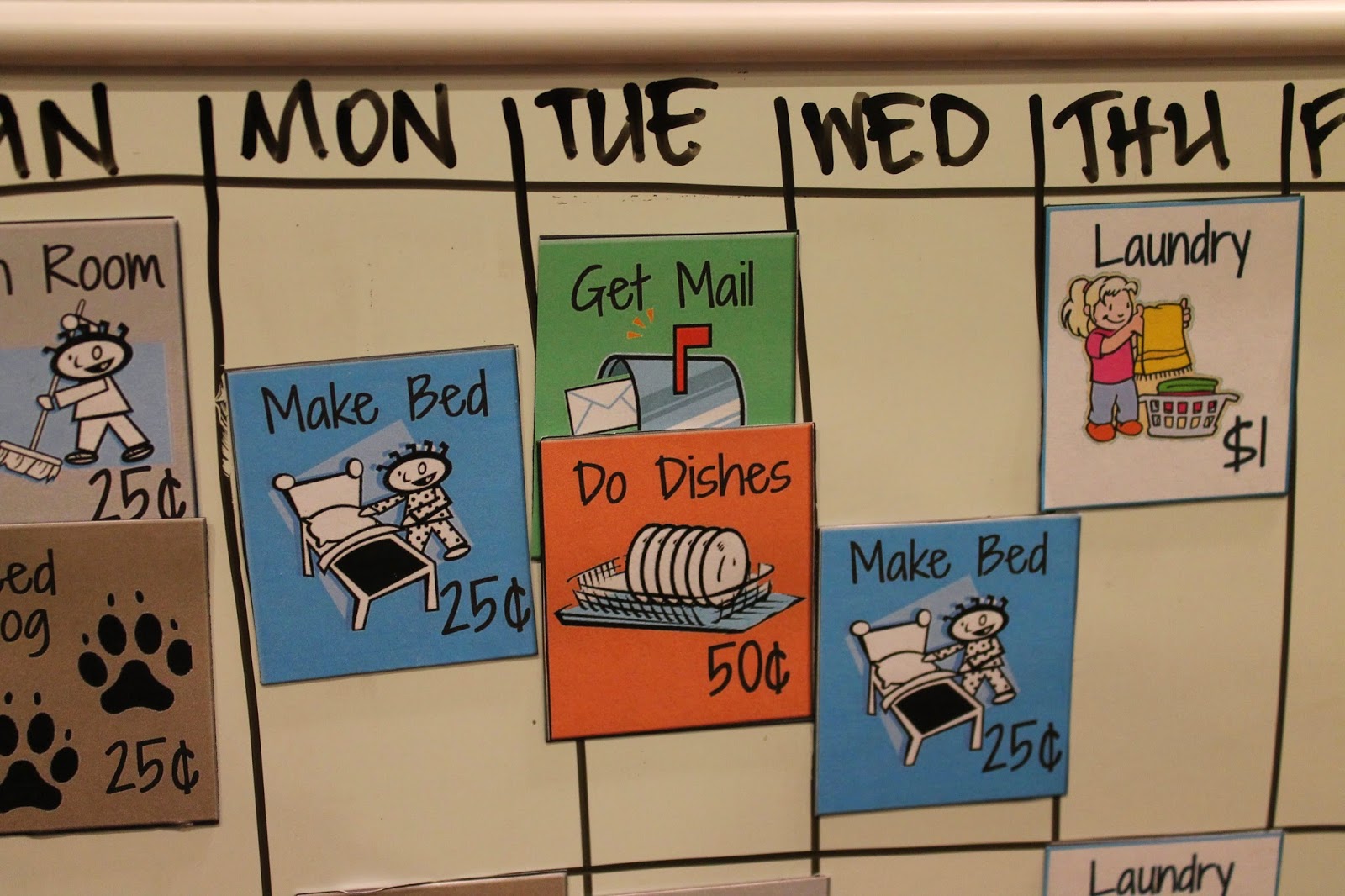Lately I finally read through Dave Ramsey's books, The Total Money Makeover and one of his newer books that he wrote with his daughter, Rachel Cruz - Smart Money, Smart Kids. I've listened to Dave Ramsey's radio show for quite some time, so the theories weren't new to me, but it was nice to see everything laid out in the book with lots of personal stories to break up the information.
The Smart Money, Smart Kids book was really inspiring too. I've long watched my two boys often acting as though they deserve to have things handed to them, and I wanted to change that. It's funny that they could even act entitled to anything, when they've spent so many years of their lives having to hear that "it's not in the budget". The book gave me lots of great ideas to start incorporating now when they're at the tender young ages of 6 and 8.
The most important idea, for me, in the book was teaching them that money comes from work. There would be no "allowances", or entitlements. Instead, we would offer them commission. We put together a set of chores that could be done each week. Some on a daily basis and others just 1-2 times per week, and each with a set price tag. Each day when they completed a chore, they would mark it on the chart and at the end of the week they have to count up what commission they are owed (this is also great for helping them become better at counting money) and then they are paid in cash.
I took a couple pictures of the chart I created and then list of chores we make available, just give others some ideas of how to get started. I created our chores and put them on magnetic business cards that I had cut in half. I opted to use just plain paper for the chores themselves because it allowed the magnets to have enough power to stack/stick to each other, thus taking up less space on the fridge. I made enough magnets for the maximum number of times that each chore could be done each week.
If you would like to use the chores I created, you can download the pdf that contains these 4 pages of the chores as seen above.
Then we picked up a dry erase board that measured 14 inches wide x 11 inches tall. This actually worked out to be a perfect size because there was just enough room for each day to have a space that was exactly as wide as each chore magnet. There certainly are lots of ways to put a chart together, but I will say after a few months of putting this in place it continues to go amazingly well.
We haven't had the most success so far with convincing them to spend, save and give. My 8 year old does a great job of selecting something he wants to save up for (totally thought he would have been more of a spender than a saver), but then doesn't want to use one cent for anything other than saving up for his goal purchase. He also doesn't seem to "in to" giving. We've done a better job of demonstrating giving, by picking up some non-perishable foods to give to a food drive or donating out-grown clothing to the thrift store, but neither of them really want to part with the money they worked hard to earn. I'm sure with gentle persuasion it will come.
It certainly has stopped a lot of crying and whining fits that used to result when they were denied something that they felt they really needed to have. We had an instance of this about a month ago. My 8 year old had seen a pair of shoes someone else got, and desperately wanted a pair. I told him we had just bought him shoes and that we were not spending more money on shoes for him when he hadn't outgrown his and simply didn't need them. He threw a momentary tantrum and then he decided he would print out a picture of the shoes he wanted, and would do extra chores to save up for them. After a month of hard work, and with a generous holiday gift card, he was able to purchase the shoes himself.
There are a few things that money cannot buy, and one of them is the look of pure delight and satisfaction when his dedication has enabled him to purchase something he wants that we were not willing to provide for him.











No comments:
Post a Comment